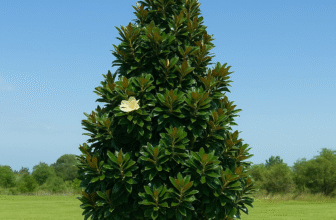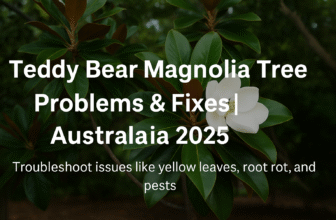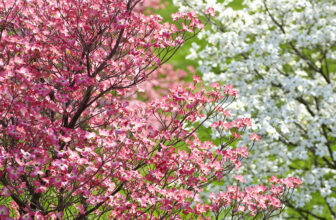Australia is home to some of the world’s most unique and colourful flowers. From bold Waratahs to soft Flannel Flowers, our native plants are tough, beautiful, and made for our climate. I’ve always been drawn to the wild beauty of Australian native flowers in every season.
In this easy 2025 guide, I’ll explain my favourite native flowers, how to grow them, tips I’ve learned over the years, and fun facts.
Why Choose Native Flowers?
Native flowers are naturally suited to Australia’s tough conditions.
They can handle:
- Drought
- Poor soils
- Heat and wind
They also:
- Attract native birds, bees, and butterflies
- Needs less water and care
- Look amazing all year round
- Thrive with fewer chemicals and fertilisers
- They are less prone to pests and diseases
If you want a low-maintenance, full-of-life garden, start with natives. They are also the easiest way to support your local environment.
My Top 10 Australian Native Flowers
Here are ten beautiful flowers I’ve grown in my garden or admired in others. These work well across different parts of Australia.
1. Waratah (Telopea speciosissima)
- A bright red flower, iconic and eye-catching
- The floral emblem of New South Wales
- It blooms in spring and makes a striking focal point
- Native to coastal and mountain areas
Tips:
- Likes well-drained, slightly acidic soil
- Grows best in dappled sunlight
- Mulch regularly to keep roots cool
2. Grevillea
- Wide range of sizes and flower colours
- Spider-like flowers attract birds and insects
- Blooms across multiple seasons
- Popular for native hedges and screens
Tips:
- Choose dwarf varieties for pots or small spaces
- Prune regularly to maintain shape and flowering
- Use native-specific fertiliser
3. Kangaroo Paw (Anigozanthos)
- Fuzzy flowers shaped like kangaroo feet
- Colours include red, yellow, green, pink, and black
- Great for borders and feature planting
Tips:
- Prefers full sun and well-drained sandy soil
- Remove spent flowers to encourage more blooms
- Protect from fungal rust in humid climates
4. Flannel Flower (Actinotus helianthi)
- Velvety petals with soft, silvery foliage
- Native to coastal NSW
- Blooms in spring and early summer
Tips:
- Thrives in sandy, well-drained soil
- Perfect for wildflower-style gardens
- Combine with Everlastings for a soft look
5. Banksia
- Cone-shaped flowers, distinctive and hardy
- Flowering from summer to winter, depending on the type
- Loved by birds and small animals
Tips:
- Avoid clay soil; prefer sandy or gravelly soils
- It needs good airflow to prevent disease
- There is no need for water once it is established
6. Wattle (Acacia)
- Bright yellow puffball flowers in early spring
- National Flower of Australia
- Over 900 species are available
Tips:
- Fast-growing and often used as a windbreak
- Can tolerate poor soil and drought
- Use as an early colour burst in your garden
7. Billy Buttons (Craspedia globosa)
- Round, bright yellow balls on tall stems
- Great for fresh and dried arrangements
- Adds fun texture to garden beds
Tips:
- Water sparingly once established
- Full sun brings out the brightest colour
- Plant in clumps for maximum impact
8. Everlasting Daisy (Xerochrysum bracteatum)
- Bold, colourful, daisy-like blooms
- One of the longest-lasting dried flowers
- Popular with pollinators
Tips:
- Remove dead flowers to extend blooming
- Works well in sunny borders and pots
- Combine with native grasses for natural appeal
9. Hardenbergia (False Sarsaparilla)
- Climbing plant with purple pea-like flowers
- Blooms in late winter to early spring
- Great for fences, arches, and trellises
Tips:
- Prune after flowering to manage growth
- Needs some support to climb
- Drought-tolerant once established
10. Bluebells (Wahlenbergia)
- Small, delicate blue flowers
- Naturalised across lawns and rockeries
- Blooms from spring to autumn
Tips:
- Tolerates neglect and foot traffic
- It works well as a filler between pavers
- Great for wildlife-friendly gardens
Regional Planting Tips
Australia has many climates. Choose flowers suited to your area.
🌿 NSW & ACT
- Waratah thrives in shaded bushland gardens
- Flannel Flower does well in coastal zones
- Grevilleas bloom well in both city and country gardens
🌞 QLD
- Tropical Grevilleas handle heat and humidity
- Wattle varieties such as Acacia fimbriata grow well
- Bluebells provide year-round colour with minimal care
🍷 VIC & SA
- Kangaroo Paw is drought-tolerant and colourful
- Everlasting Daisies love dry summers
- Billy Buttons are perfect for clay soils
🏜️ WA
- Western Banksia species are iconic and hardy
- Everlasting carpet entire regions in spring
- Native orchids grow in woodlands and bush blocks
🌵 NT
- Saltbush and wattles survive intense heat
- Native grasses help prevent erosion
- Groundcovers such as Myoporum thrive in arid soil
Tips for Growing Natives
The vibrant colours of Australian native flowers bring life to even the driest backyards.
1. Choose local varieties. Native to your state or region.
2. Plant in well-drained soil. Avoid heavy, wet soils.
3. Use mulch. It reduces weeds and keeps the soil moist.
4. Water deeply, not often. Encourages deeper roots.
5. Prune regularly. More flowers, neater shape.
6. Use native fertilisers. Low in phosphorus.
7. Avoid overwatering, especially in cooler months.
8. Start with smaller plants. Tube stock is established faster.
9. Watch for pests. Like borers and scale — treat early.
10. Group similar plants. Match the sun, soil, and watering needs.
Australian native flowers aren’t just beautiful—they help local birds, bees, and butterflies thrive.
Native Flowers by Season
Plan for colour all year.
Spring: Waratah, Flannel Flower, Everlasting Daisy Summer: Grevillea, Kangaroo Paw, Banksia Autumn: Wattle, Billy Buttons, Bluebells Winter: Hardenbergia, Banksia, Native Iris
For Small Gardens or Pots
Try:
- Dwarf Grevillea in pots
- Hanging Hardenbergia for balconies
- Billy Buttons in small sunny beds
- Bluebells in rockeries or paving gaps
Great options for renters, balconies, or small backyards.
Native Flowers for Wildlife
Create a thriving ecosystem:
- Grevillea: Attracts nectar-feeding birds
- Daisies: Bees and butterflies love them
- Wattle: Shelter for birds, food for insects
- Banksia: Supports birds, possums, and bees
Extra Tip: Add a shallow dish of water and keep it clean.
Fun Flower Facts
- Waratah seeds often need bushfire to germinate
- Banksias are named after botanist Joseph Banks
- Flannel Flowers are popular in Aussie weddings
- Everlastings can keep their colour for years when dried
- Kangaroo Paw is Western Australia’s floral emblem
Decorating with Native Flowers
Natives are great for home decor:
- Table vases: Use Kangaroo Paw and Everlastings
- Dried flowers: Try Billy Buttons, Wattles
- Wall hangings: Press Flannel Flowers and Banksia pods
It adds rustic charm and lasts longer than imported flowers.
Common Problems & Fixes
Are grevilleas yellowing? They may need native fertiliser. There are no flowers on Kangaroo Paw? Check sunlight and prune. Banksia is rotting? Improve drainage and reduce watering. Hardenbergia not flowering? It needs winter sunlight.
Always observe and adjust care as seasons change.
FAQs – Native Flowers in Australia 2025
Q: Can I grow natives from seed?
Yes! But some may need special treatment, such as smoking or soaking.
Q: Are native flowers pet-safe?
Most are but double-check before planting.
Q: Where can I buy native plants?
Try local native nurseries, online stores, or garden centres like Bunnings.
Q: How often should I feed native plants?
Once or twice a year with a low-phosphorus fertiliser.
Q: Can I mix natives with exotic plants?
Yes, just group plants with similar sun, water, and soil needs.
Final Thoughts
Growing native flowers changed the way I garden—less work, more life, and beauty that suits our Aussie climate.
Whether you live in the outback, the suburbs, or an apartment, there’s a native plant that fits.
Start small. Learn from your plants. And let your garden bloom with Australia’s natural beauty.
I always recommend Australian native flowers to friends who want colour without constant care.





